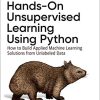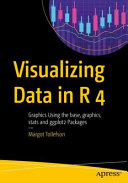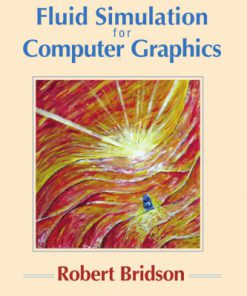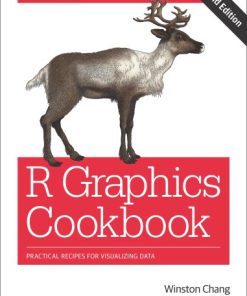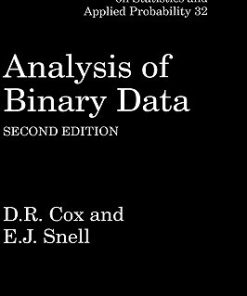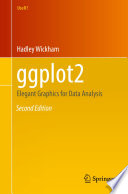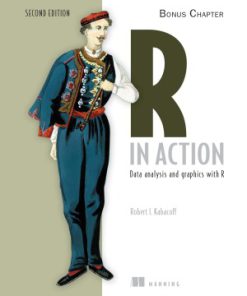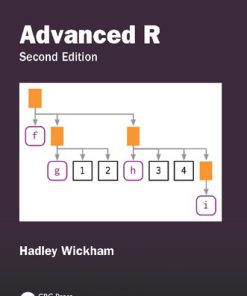ggplot2 Elegant Graphics For Data Analysis 2nd Edition by Hadley Wickham 331924275X 9783319242750
$50.00 Original price was: $50.00.$25.00Current price is: $25.00.
ggplot2 Elegant Graphics For Data Analysis 2nd Edition by Hadley Wickham- Ebook PDF Instant Download/Delivery: 9783319242750, 331924275X
Full download ggplot2 Elegant Graphics For Data Analysis 2nd Edition after payment
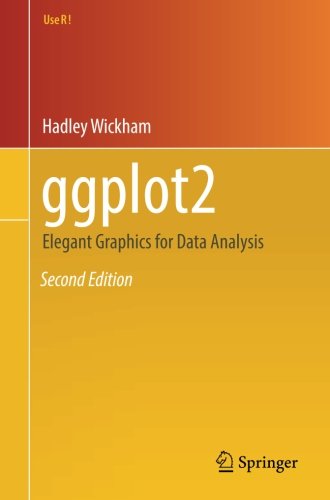
Product details:
ISBN 10:331924275X
ISBN 13:9783319242750
Author:Hadley Wickham
This new edition to the classic book by ggplot2 creator Hadley Wickham highlights compatibility with knitr and RStudio. ggplot2 is a data visualization package for R that helps users create data graphics, including those that are multi-layered, with ease. With ggplot2, it’s easy to:
- produce handsome, publication-quality plots with automatic legends created from the plot specification
- superimpose multiple layers (points, lines, maps, tiles, box plots) from different data sources with automatically adjusted common scales
- add customizable smoothers that use powerful modeling capabilities of R, such as loess, linear models, generalized additive models, and robust regression
- save any ggplot2 plot (or part thereof) for later modification or reuse
- create custom themes that capture in-house or journal style requirements and that can easily be applied to multiple plots
- approach a graph from a visual perspective, thinking about how each component of the data is represented on the final plot
This book will be useful to everyone who has struggled with displaying data in an informative and attractive way. Some basic knowledge of R is necessary (e.g., importing data into R). ggplot2 is a mini-language specifically tailored for producing graphics, and you’ll learn everything you need in the book. After reading this book you’ll be able to produce graphics customized precisely for your problems, and you’ll find it easy to get graphics out of your head and on to the screen or page.
ggplot2 Elegant Graphics For Data Analysis 2nd Table of contents:
Part I Getting Started
1 Introduction
1.1 Welcome to ggplot2
1.2 What Is the Grammar of Graphics?
1.3 How Does ggplot2 Fit in with Other R Graphics?
1.4 About This Book
1.5 Installation
1.6 Other Resources
1.7 Colophon
References
2 Getting Started with ggplot2
2.1 Introduction
2.2 Fuel Economy Data
2.2.1 Exercises
2.3 Key Components
2.3.1 Exercises
2.4 Colour, Size, Shape and Other Aesthetic Attributes
2.4.1 Exercises
2.5 Facetting
2.5.1 Exercises
2.6 Plot Geoms
2.6.1 Adding a Smoother to a Plot
2.6.2 Boxplots and Jittered Points
2.6.3 Histograms and Frequency Polygons
2.6.4 Bar Charts
2.6.5 Time Series with Line and Path Plots
2.6.6 Exercises
2.7 Modifying the Axes
2.8 Output
2.9 Quick Plots
3 Toolbox
3.1 Introduction
3.2 Basic Plot Types
3.2.1 Exercises
3.3 Labels
3.4 Annotations
3.5 Collective Geoms
3.5.1 Multiple Groups, One Aesthetic
3.5.2 Different Groups on Different Layers
3.5.3 Overriding the Default Grouping
3.5.4 Matching Aesthetics to Graphic Objects
3.5.5 Exercises
3.6 Surface Plots
3.7 Drawing Maps
3.7.1 Vector Boundaries
3.7.2 Point Metadata
3.7.3 Raster Images
3.7.4 Area Metadata
3.8 Revealing Uncertainty
3.9 Weighted Data
3.10 Diamonds Data
3.11 Displaying Distributions
3.11.1 Exercises
3.12 Dealing with Overplotting
3.13 Statistical Summaries
3.14 Add-on Packages
References
Part II The Grammar
4 Mastering the Grammar
4.1 Introduction
4.2 Building a Scatterplot
4.2.1 Mapping Aesthetics to Data
4.2.2 Scaling
4.3 Adding Complexity
4.4 Components of the Layered Grammar
4.4.1 Layers
4.4.2 Scales
4.4.3 Coordinate System
4.4.4 Facetting
4.5 Exercises
References
5 Build a Plot Layer by Layer
5.1 Introduction
5.2 Building a Plot
5.3 Data
5.3.1 Exercises
5.4 Aesthetic Mappings
5.4.1 Specifying the Aesthetics in the Plot vs. in the Layers
5.4.2 Setting vs. Mapping
5.4.3 Exercises
5.5 Geoms
5.5.1 Exercises
5.6 Stats
5.6.1 Generated Variables
5.6.2 Exercises
5.7 Position Adjustments
5.7.1 Exercises
6 Scales, Axes and Legends
6.1 Introduction
6.2 Modifying Scales
6.2.1 Exercises
6.3 Guides: Legends and Axes
6.3.1 Scale Title
6.3.2 Breaks and Labels
6.3.3 Exercises
6.4 Legends
6.4.1 Layers and Legends
6.4.2 Legend Layout
6.4.3 Guide Functions
6.4.3.1 guide_legend()
6.4.3.2 guide_colourbar
6.4.4 Exercises
6.5 Limits
6.5.1 Exercises
6.6 Scales Toolbox
6.6.1 Continuous Position Scales
6.6.2 Colour
6.6.2.1 Continuous
6.6.2.2 Discrete
6.6.3 The Manual Discrete Scale
6.6.4 The Identity Scale
6.6.5 Exercises
References
7 Positioning
7.1 Introduction
7.2 Facetting
7.2.1 Facet Wrap
7.2.2 Facet Grid
7.2.3 Controlling Scales
7.2.4 Missing Facetting Variables
7.2.5 Grouping vs. Facetting
7.2.6 Continuous Variables
7.2.7 Exercises
7.3 Coordinate Systems
7.4 Linear Coordinate Systems
7.4.1 Zooming into a Plot with coord_cartesian()
7.4.2 Flipping the Axes with coord_flip()
7.4.3 Equal Scales with coord_fixed()
7.5 Non-linear Coordinate Systems
7.5.1 Transformations with coord_trans()
7.5.2 Polar Coordinates with coord_polar()
7.5.3 Map Projections with coord_map()
8 Themes
8.1 Introduction
8.2 Complete Themes
8.2.1 Exercises
8.3 Modifying Theme Components
8.4 Theme Elements
8.4.1 Plot Elements
8.4.2 Axis Elements
8.4.3 Legend Elements
8.4.4 Panel Elements
8.4.5 Facetting Elements
8.4.6 Exercises
8.5 Saving Your Output
References
Part III Data Analysis
9 Data Analysis
9.1 Introduction
9.2 Tidy Data
9.3 Spread and Gather
9.3.1 Gather
9.3.2 Spread
9.3.3 Exercises
9.4 Separate and Unite
9.4.1 Exercises
9.5 Case Studies
9.5.1 Blood Pressure
9.5.2 Test Scores
9.6 Learning More
References
10 Data Transformation
10.1 Introduction
10.2 Filter Observations
10.2.1 Useful Tools
10.2.2 Missing Values
10.2.3 Exercises
10.3 Create New Variables
10.3.1 Useful Tools
10.3.2 Exercises
10.4 Group-wise Summaries
10.4.1 Useful Tools
10.4.2 Statistical Considerations
10.4.3 Exercises
10.5 Transformation Pipelines
10.5.1 Exercises
10.6 Learning More
Reference
11 Modelling for Visualisation
11.1 Introduction
11.2 Removing Trend
11.2.1 Exercises
11.3 Texas Housing Data
11.3.1 Exercises
11.4 Visualising Models
11.5 Model-Level Summaries
11.5.1 Exercises
11.6 Coefficient-Level Summaries
11.6.1 Exercises
11.7 Observation Data
11.7.1 Exercises
Reference
12 Programming with ggplot2
12.1 Introduction
12.2 Single Components
12.2.1 Exercises
12.3 Multiple Components
12.3.1 Plot Components
12.3.2 Annotation
12.3.3 Additional Arguments
12.3.4 Exercises
12.4 Plot Functions
12.4.1 Indirectly Referring to Variables
12.4.2 The Plot Environment
12.4.3 Exercises
12.5 Functional Programming
12.5.1 Exercises
People also search for ggplot2 Elegant Graphics For Data Analysis 2nd :
ggplot2 elegant graphics for data analysis
ggplot2 elegant graphics for data analysis (3e)
ggplot2 elegant graphics for data analysis github
ggplot2 examples
ggplot2 elegant graphics for data analysis 2e
Tags:
Hadley Wickham,Analysis,Graphics,Elegant,ggplot2
You may also like…
Computers - Programming
R Cookbook Proven Recipes for Data Analysis Statistics and Graphics Jd Long
Computers - Computer Science
Computers
Fluid Simulation for Computer Graphics 2nd Edition by Robert Bridson ISBM 135196884X 9781351968843
Science (General)
Computers - Computer Science
ggplot2 Elegant Graphics For Data Analysis Second Edition Hadley Wickham Carson Sievert
Computers - Programming
Computers - Programming
Computers - Applications & Software



